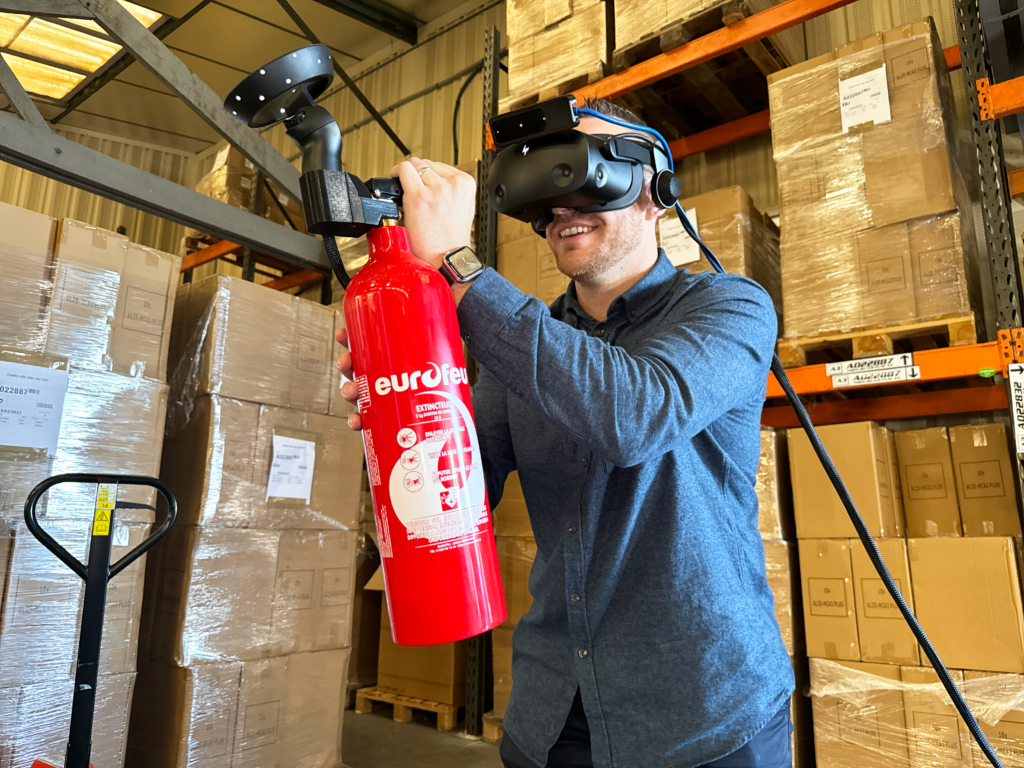How long does fire safety training last?

Fire safety training is a key element in fire risk prevention and management. Its duration varies according to the level of competence required and the tasks assigned. It can range from half a day for an introduction to fire extinguisher use and evacuation procedures, to 70 hours for a qualifying course such as SSIAP (Service de Sécurité Incendie et d'Assistance à Personnes). Under French labor laws and regulations, this type of training is often compulsory for companies.
Understanding fire safety training
To fully understand fire safety training, it's essential to familiarize yourself with certain key aspects. The training is divided into several modules covering a variety of topics:
- Knowledge of fire and its consequences: Understand how fire spreads and the damage it can cause.
- Fire regulations: Learn about the laws and rules in force in establishments open to the public and high-rise buildings.
- Use of safety equipment: Know how to handle fire extinguishers and other fire-fighting equipment.
- Evacuation procedures: To be able to guide people in an emergency situation to a safe place.
Each participant acquires the practical and theoretical skills needed to react effectively in the event of a fire. Training courses can include evacuation drills to ensure that knowledge is put into practice.
Fire safety training duration
Duration of initial SSIAP 1 training
The initial SSIAP 1 training course is designed to prepare future agents to provide fire safety services in a variety of establishments. It generally lasts 70 hours, spread over 10 days, not including the time required for the final exam.
Participants must meet certain prerequisites, such as having a recent first aid certificate. The program covers various aspects:
- Understanding fire behavior and associated risks
- Knowledge of technical installations and safety equipment
- Application of evacuation procedures
This course combines theory and practice to ensure complete assimilation of the necessary skills. With a maximum of 12 trainees per session, it offers a personalized, interactive approach to learning for future fire safety officers.
Duration of initial SSIAP 2 training
Initial SSIAP 2 training lasts 70 hours, spread over 10 days. It is essential for those wishing to become a fire safety team leader in establishments open to the public or in high-rise buildings. This training prepares you to manage a safety team and supervise rescue operations.
It comprises several practical and theoretical modules. Participants must master the handling of fire safety systems and the operation of a central security station. Acquired skills also include managing emergency situations and receiving emergency services.
To register, you must :
- SSIAP 1 diploma
- 1607 hours of fire safety experience
- Hold a valid first-aid certificate
These prerequisites ensure that candidates are well prepared for the responsibilities of the job.
Fire training: extinguisher and evacuation
For effective fire training, it's essential to focus on two main areas: fire extinguisher use and evacuation. These courses, generally lasting half a day, are crucial to ensuring the safety of employees and facilities.
Training in the use of fire extinguishers enables participants to understand the different classes of fire and to choose the appropriate type of extinguisher. They learn how to handle this equipment safely, which is essential in the event of a fire.
With regard to evacuation, practical exercises help employees to familiarize themselves with safety instructions and evacuation procedures. This includes recognizing fire alarms, locating emergency exits and coordinating effectively during an evacuation.
These training courses are not only compulsory, but must be renewed regularly to ensure optimum safety levels.
The different stages of fire safety training
A fire safety training course generally follows several essential stages. First, a theoretical introduction is offered to familiarize participants with the basics of fire, its causes and consequences. This phase also includes current fire safety regulations.
This is followed by practical exercises. These include the use of fire extinguishers, on-site risk assessment and the implementation of evacuation procedures. Participants learn to identify emergency exits and handle safety equipment.
Finally, incident simulations are used to apply the knowledge acquired. These scenarios help reinforce reflexes in the event of an emergency. A final assessment can be organized to validate participants' skills.
These steps ensure a complete and practical understanding of fire safety measures, essential for effectively protecting people and property.
The role of the fire safety officer
SSIAP 1 agent responsibilities
The SSIAP 1 agent plays a crucial role in fire safety in establishments open to the public (ERP) and high-rise buildings (IGH). Their main responsibilities include fire prevention, constant vigilance and rapid reaction in the event of an alarm.
In practice, this means making regular security rounds to detect any anomalies. He or she is also responsible for raising staff awareness of fire risks, and ensuring that safety equipment such as fire extinguishers and alarms are operational.
The agent must master evacuation procedures to effectively guide occupants in the event of an emergency. They work with the security team to coordinate responses, and play an active role in evacuation drills. Ongoing training ensures that they remain up to date on fire safety standards and techniques.
Skills required to become a SSIAP 2 agent
To become a SSIAP 2 agent, certain specific skills are required. It is essential to know how to lead and direct a team. This includes managing SSIAP 1 agents and organizing in-house training to maintain the skill level of the whole team.
A good SSIAP 2 agent must also know how to operate the central security station. This involves monitoring the premises and managing emergencies.
Here are some key skills to master:
- Fire response coordination
- The ability to carry out regular security rounds
- Implementing evacuation procedures
Finally, a thorough knowledge of safety equipment, such as fire extinguishers and alarm systems, is essential to ensure the protection of people and property.
How do I take the fire safety course?
The training registration process
To register for a fire safety training course, there are several steps to follow. First, identify the training center that offers the program best suited to your needs. You can consult specialized websites or contact the organization directly for detailed information.
Once you've made your choice, check the prerequisites for enrolment. These may include specific diplomas or previous professional experience.
Next, prepare your application file, which generally includes :
- A copy of your identity card
- Your CV
- Proof of your qualifications or experience
Finally, some training courses can be financed by schemes such as the CPF (Compte Personnel de Formation). Don't hesitate to ask about the possibility of covering your costs. Make sure you respect the registration deadlines to guarantee your place in the chosen session.
The SSIAP final exam
The SSIAP final exam assesses the skills acquired through two distinct tests. The first is theoretical, in the form of a multiple-choice questionnaire (MCQ), which measures candidates' knowledge of regulations, fire safety techniques and evacuation procedures.
The second test is a practical one, involving a safety patrol. Candidates must identify and report any anomalies or potential risks. This practical assessment tests their ability to react in real-life situations.
To pass the exam, a minimum grade is required, and the jury generally includes industry professionals, guaranteeing an objective assessment. Certification is valid for three years, after which a refresher course is required to retain the right to practice.
The cost of fire safety training
The cost of fire safety training varies according to various factors. The price of SSIAP 1 training generally ranges from 980 to 1,100 euros. For those wishing to upgrade their skills, the cost of SSIAP 1 training is around 200 euros.
It's important to consider the financing options available. Pôle Emploi, for example, can cover all or part of the costs under certain conditions. In addition to SSIAP training, more targeted programs, such as fire extinguisher handling, start at 250 euros.
Companies can benefit from funding from organizations such as OPCO. This reduces the cost of effectively training employees in fire safety. By investing in such training, employers can ensure the protection of their premises and teams, while complying with current regulations.
Remuneration after fire safety training
SSIAP 1 agent salary
The salary of a SSIAP 1 agent in France is generally between €1,600 and €2,000 gross per month. This variation can be explained by a number of factors, including professional experience and any additional responsibilities.
Higher pay is often associated with night shifts or weekend service. Bonuses can also be added, increasing the monthly salary. At the start of a career, the amount may be closer to €1,600 gross.
With experience, an agent can aim for positions of greater responsibility, positively influencing his or her remuneration. For those interested in career development, further SSIAP 2 training can open up opportunities for advancement to team leader positions.
SSIAP 2 agent salary
A SSIAP 2 agent's salary can vary depending on a number of factors, including experience, location and responsibilities. On average, a SSIAP 2 agent earns between €1,700 and €2,500 per month.
Entry-level agents can expect a salary of around €1,700, while those with several years' experience can earn up to €2,500. Bonuses and allowances can also influence this amount.
To maximize their remuneration, agents may consider working in high-traffic establishments, or negotiating advantageous conditions when they are hired. It is also possible to progress to positions of greater responsibility, such as SSIAP 3 department manager, opening the way to higher pay.
Reducing the risk of fire in the workplace through training
To effectively reduce the risk of fire in the workplace, training is an essential tool. It enables employees to understand the potential causes of fire and the steps they can take to avoid them. Training often includes practical demonstrations, such as the use of fire extinguishers, to ensure that all employees are ready to react quickly.
It's crucial that each company develops a customized program to suit its business environment. Here are a few aspects to consider:
- Analysis of specific risks: identification of high-risk areas.
- Customized evacuation plan: for fast, safe evacuation.
- Assigned roles: designation of leaders such as the guide.
A case in point is the ongoing training of employees in companies handling flammable materials. This ensures that everyone knows the safety measures to be applied, thus reducing the chances of an incident occurring.


